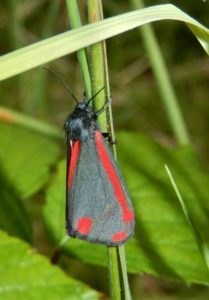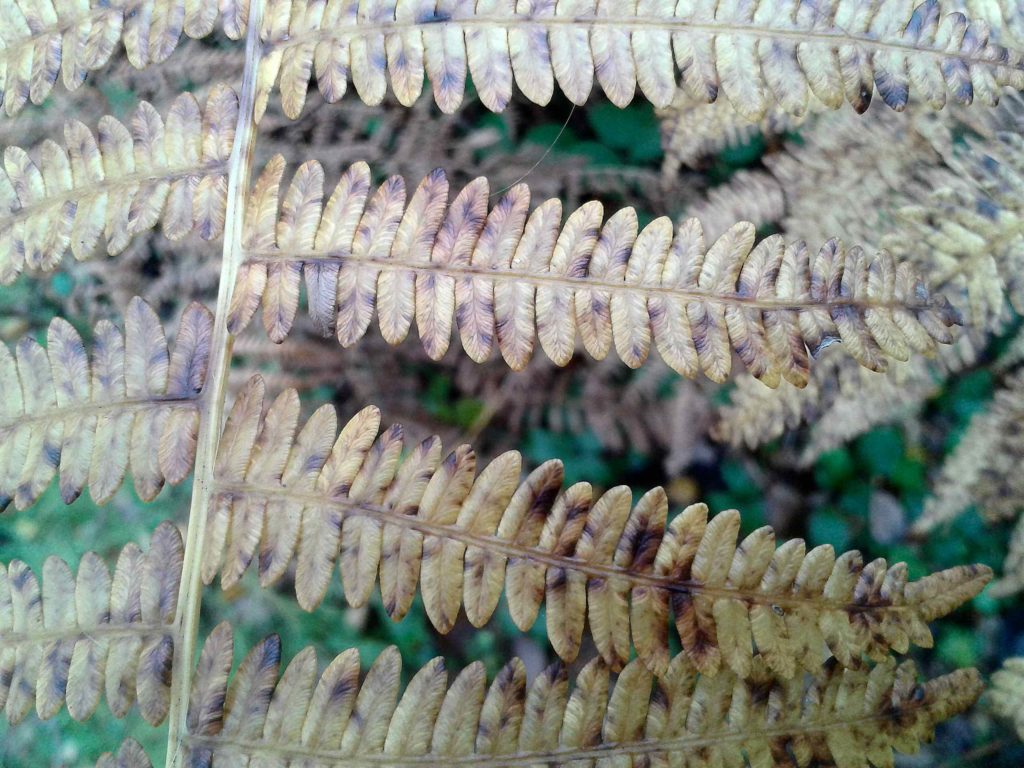
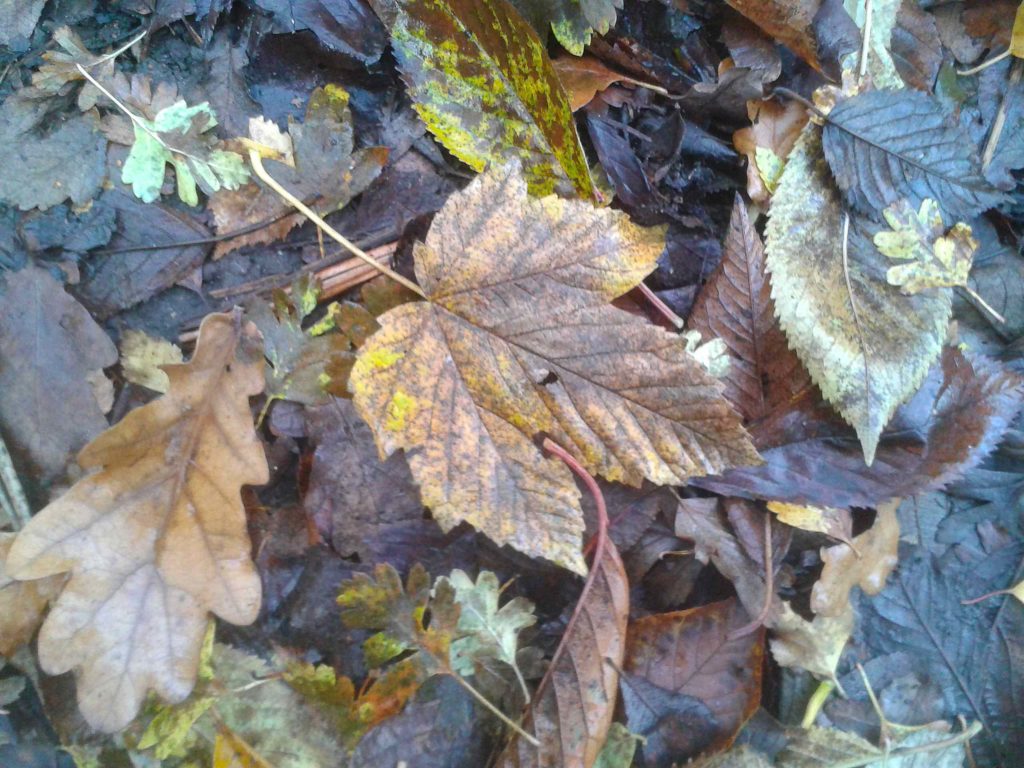
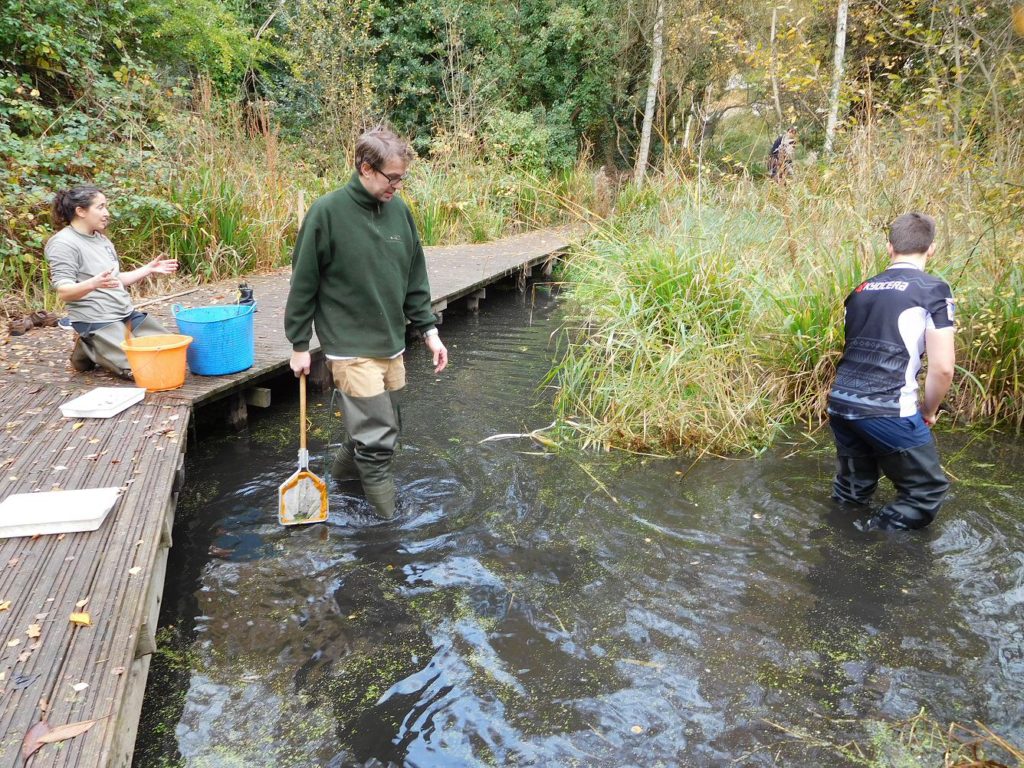
We spent the time skimming off as much of the duckweed that was blanketing the surface of the pond as possible using pole nets. The idea is to let light filter down to the bottom of the pond to encourage the more delicate pondweeds. In the process, we had a good opportunity to check the status of some of the pond life that we don’t usually get to see, as the underwater plants are rather few beside the boardwalk – most likely because the continual sampling keeps them from growing much. But the rest of the pond is another story.
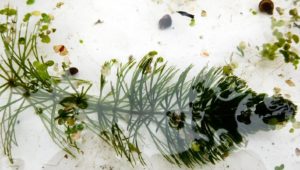
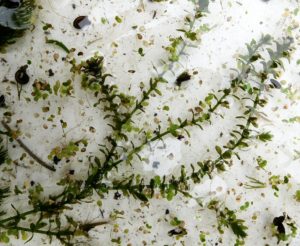
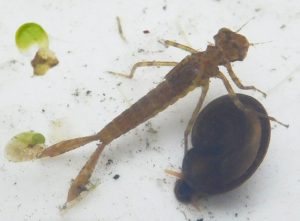
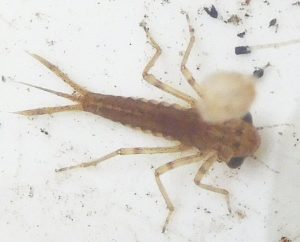
There were at least two kinds of damselfly nymph, possibly bluetail and azure damselflies, judging by a pondside look at the book without a handlens. The little camera in close-up mode is just about capable of resolving detail at this scale, given good light. The various damselfly nymphs have differently-shaped tail appendages, which the book says are diagnostic.
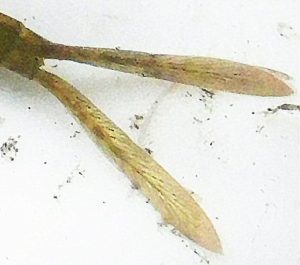
We also caught a newt or two. We carefully put all the minibeasts and interesting bits of pondweed back in the water.
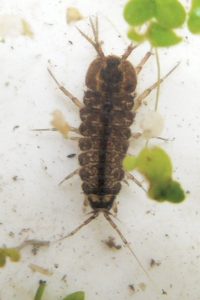
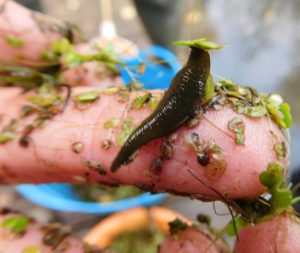
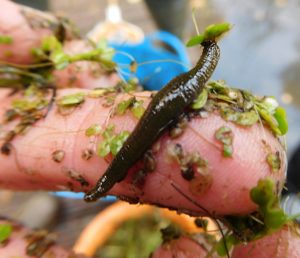
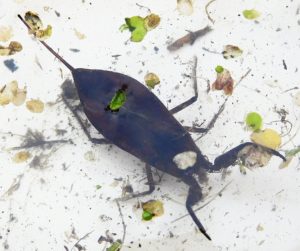
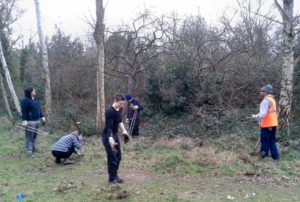
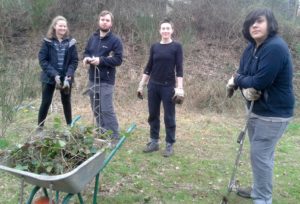
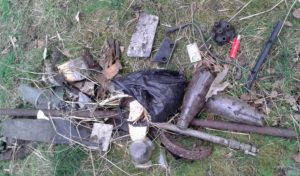
Distributor bits, wing mirror, electrical leads, yes, there used to be a garage over the fence. What with old rusty pipes, cigarette lighters, glass milk bottles (remember them?) and remains of workers’ lunches, it was quite a haul. We dug out some champion brambles and quite a few enormous nettles, too.
I also found some bits of Asbestos roofing, but we left them in situ as there was a Smooth Newt sheltering beneath them. All in all, it’s amazing what people will sling over a fence. We were happy to leave the North bank in a better state than it’s been in for many years.
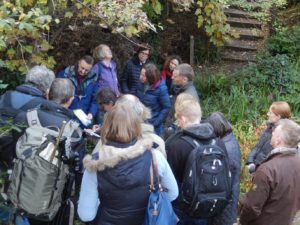
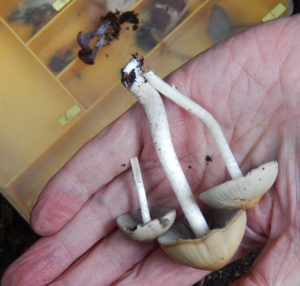
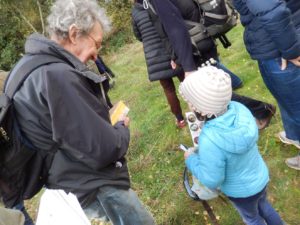
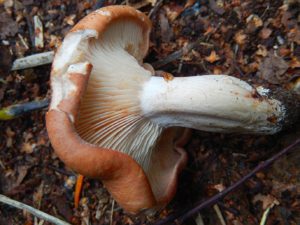
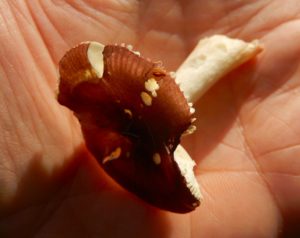
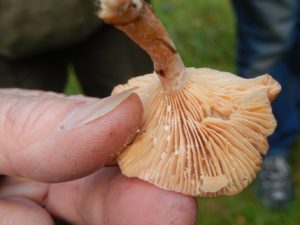
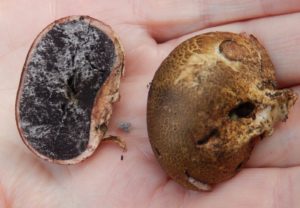


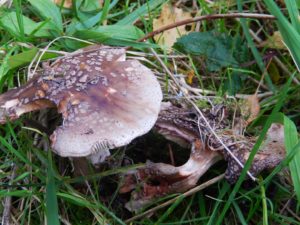
Apart from the fungi named in the image captions, we also saw plenty of the Deceiver (Laccaria laccata); Amethyst Deceiver (Laccaria amethystina); assorted species of Fairy Bonnets (Mycena spp.); the Brown Rollrim (Paxillus involutus); Puffballs (Lycoperdon perlatum); and more. There was hardly any Birch Polypore – we often have fine big white brackets of them: just one small nodule, Piptoporus betulinus.
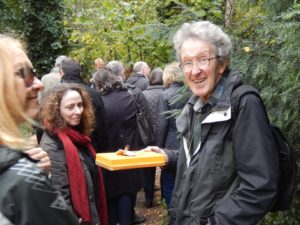
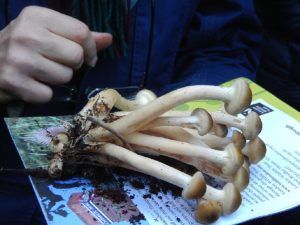
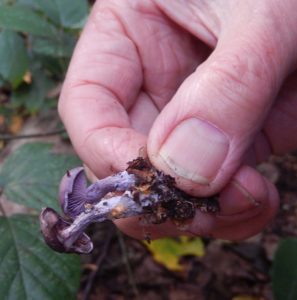
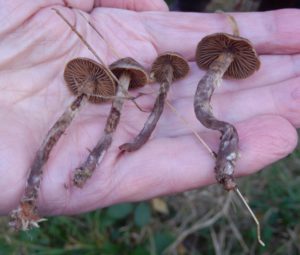
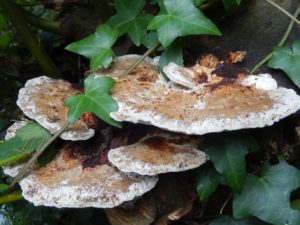
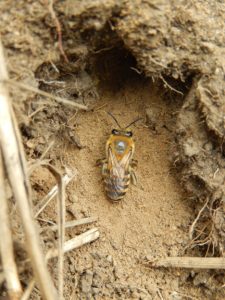
It’s not every day a new species turns up, but here’s one. The Ivy Bee, Colletes hederae, was only described in 1993. It’s a European plasterer bee that likes warm dry sandy soil, and provisions its nest with Ivy pollen (Hedera, if you didn’t get it). The eggs hatch into larvae, which eat the pollen and overwinter in the burrow. The adults emerge the following September; the females dig burrows and energetically collect the pollen which is only available then, while the males laze about, fight, grab females and mate, boast about the women they’ve laid, and drive fast cars. Well, I lied about the last two items, obviously. In 2001 the species arrived in Dorset, and it has since spread across southern England, for instance finding good sandy sites in Oxfordshire. Now in 2016 it has come to Chiswick.
We’re happy to report that the bare sandy ground on the steep south-facing bank has turned out to be ideal for this rather special bee. The young foxes seem to lark about and run up and down the bank every morning, which keeps the vegetation very low with plenty of bare soil. This is just what mason and plasterer bees like, and the ground is full of nest holes.
My thanks to Mick Massie for bringing this species to my attention.

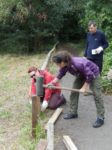
While we weren’t being diverted to photograph the Ivy Bee, we spent the day sorting out the low fence along the ramp path. Here’s Netty and the team whacking a post. I did quite a lot of digging and a fair bit of sawing.
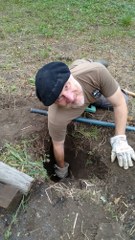
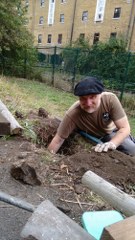
The day looked unpromising for a nature walk, let alone a butterfly transect, but it was time to do one, so after a cursory tour to clip the worst of the brambles from the paths, we set off with clipboard and cameras to see what we could find.
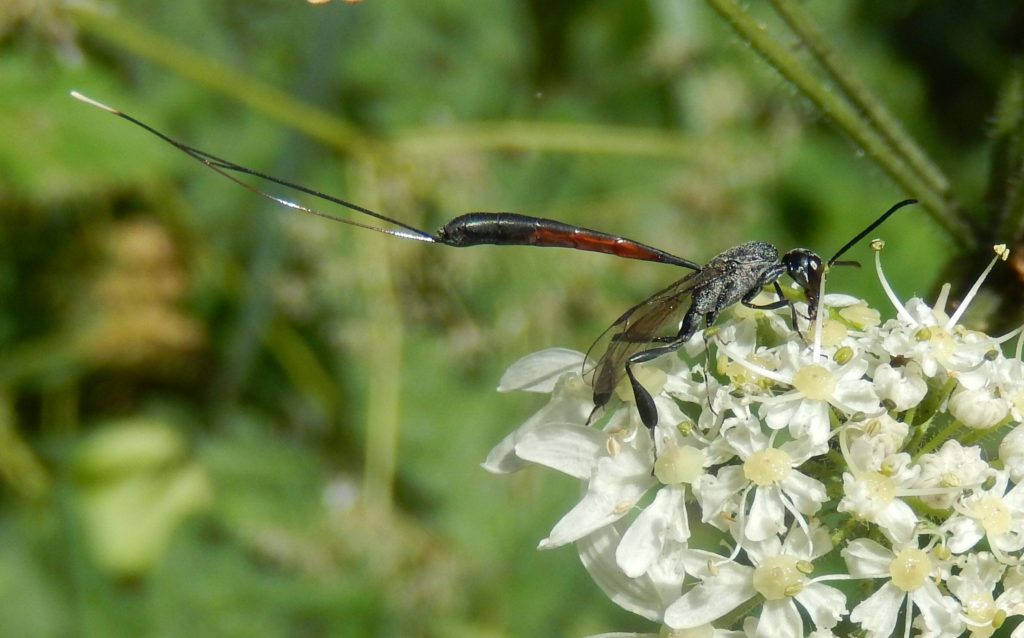
The hogweed, still in flower despite weeks of rainy weather that has caused many stalks to topple, was alive with flower beetles, bees large and small, and this magnificent Ichneumon wasp with its incredible ovipositor.
At first we saw only white butterflies, but a Comma was sunning itself, and a Speckled Wood had somehow survived the wet weather.
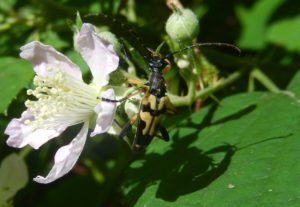
We saw two Strangalia maculata longhorn beetles taking nectar. They are Batesian mimics of wasps, looking in all truth only very slightly waspish, but perhaps young birds are put off. Or perhaps they do in fact taste foul.
We were just discussing the Sparrowhawks as we approached their nest tree when a commotion broke out along a branch, and a Sparrowhawk flew rapidly with its claws forward: a Squirrel raced away from the nest, hotly pursued by the angry bird; they leaped to the neighbouring tree and scurried up the matching branch out of sight. The Sparrowhawk broke into a loud excited chittering trill. We were all excited, laughing at the speed, the impossibility of reaching for a camera.
A Holly Blue flew over the pond, above several pairs of mating Azure Damselflies and a Yellow Iris now chewed right down to a semi-leafless state by the Iris Sawfly larvae.
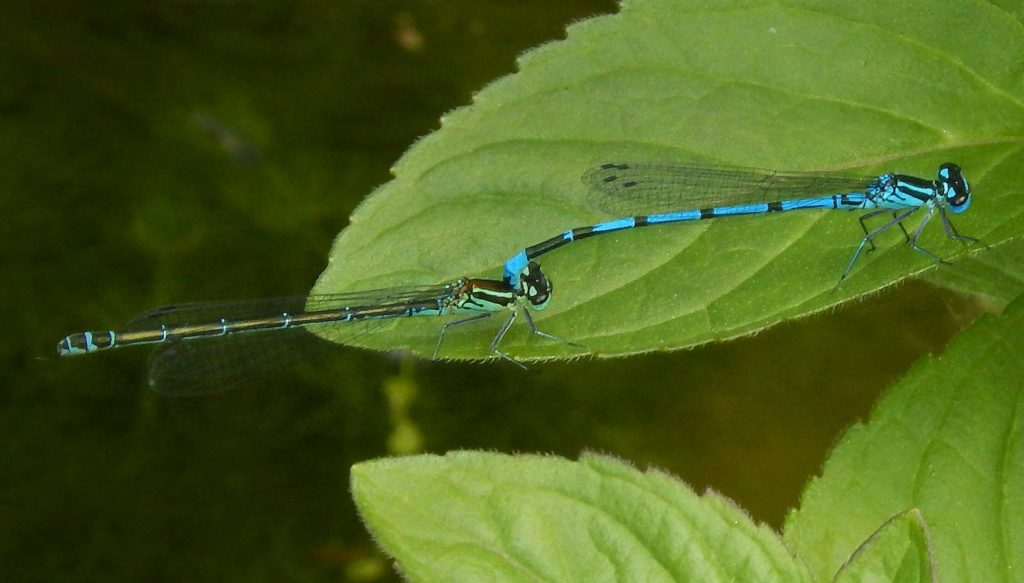
Down at the Anthill Meadow, a single Small Skipper perched on an ear of Yorkshire Fog.
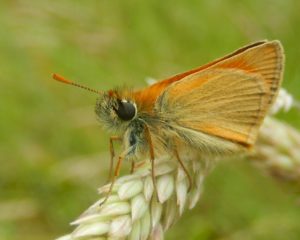
On the next ear was a male Bluetail Damselfly: they have emerged from the pond in the past week.
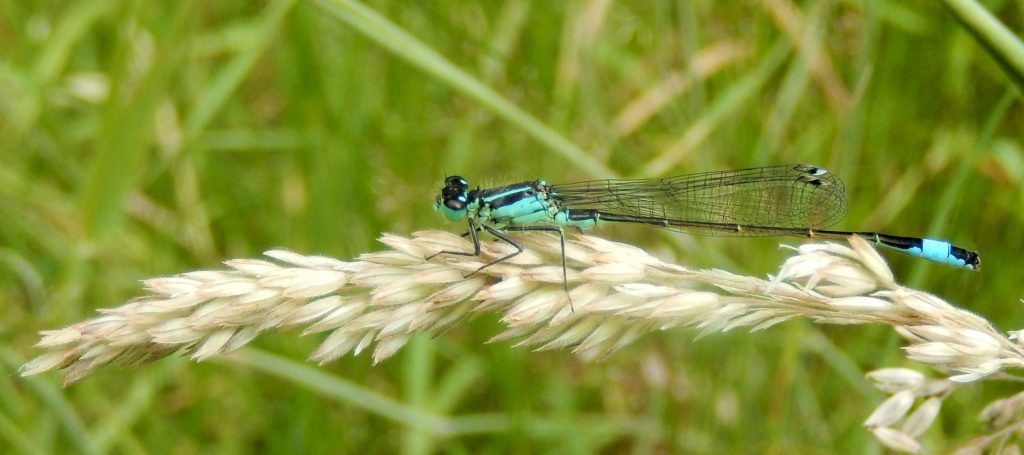
The wooden rail was sticky with snail pulp: a Song Thrush had hammered three snails open on the exposed woodwork, leaving shells and sticky patches behind.

Two days ago I saw a Cinnabar moth in the Small Meadow. There is plenty of Ragwort coming up, so with any luck there will be plenty of caterpillars soon.
